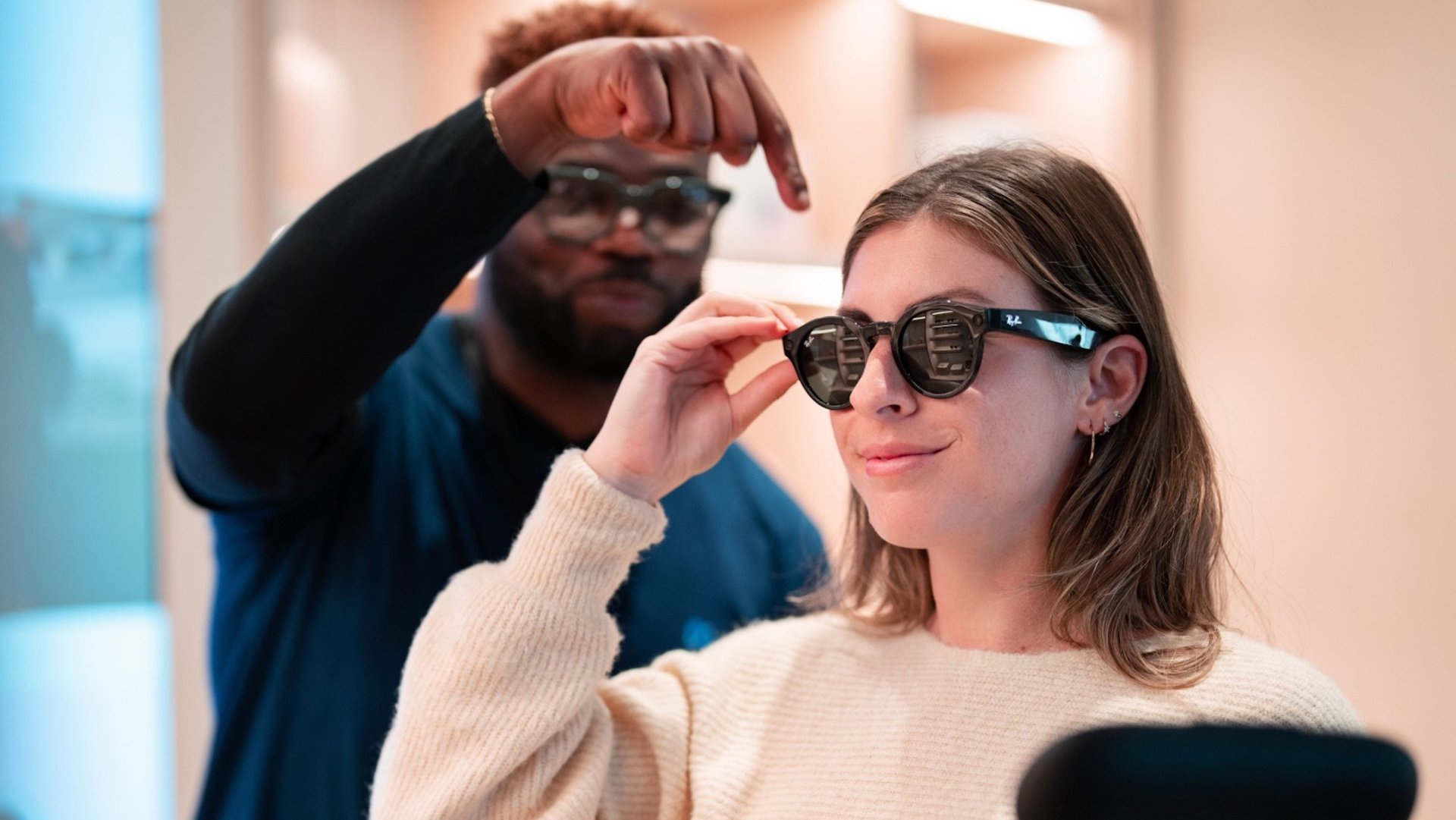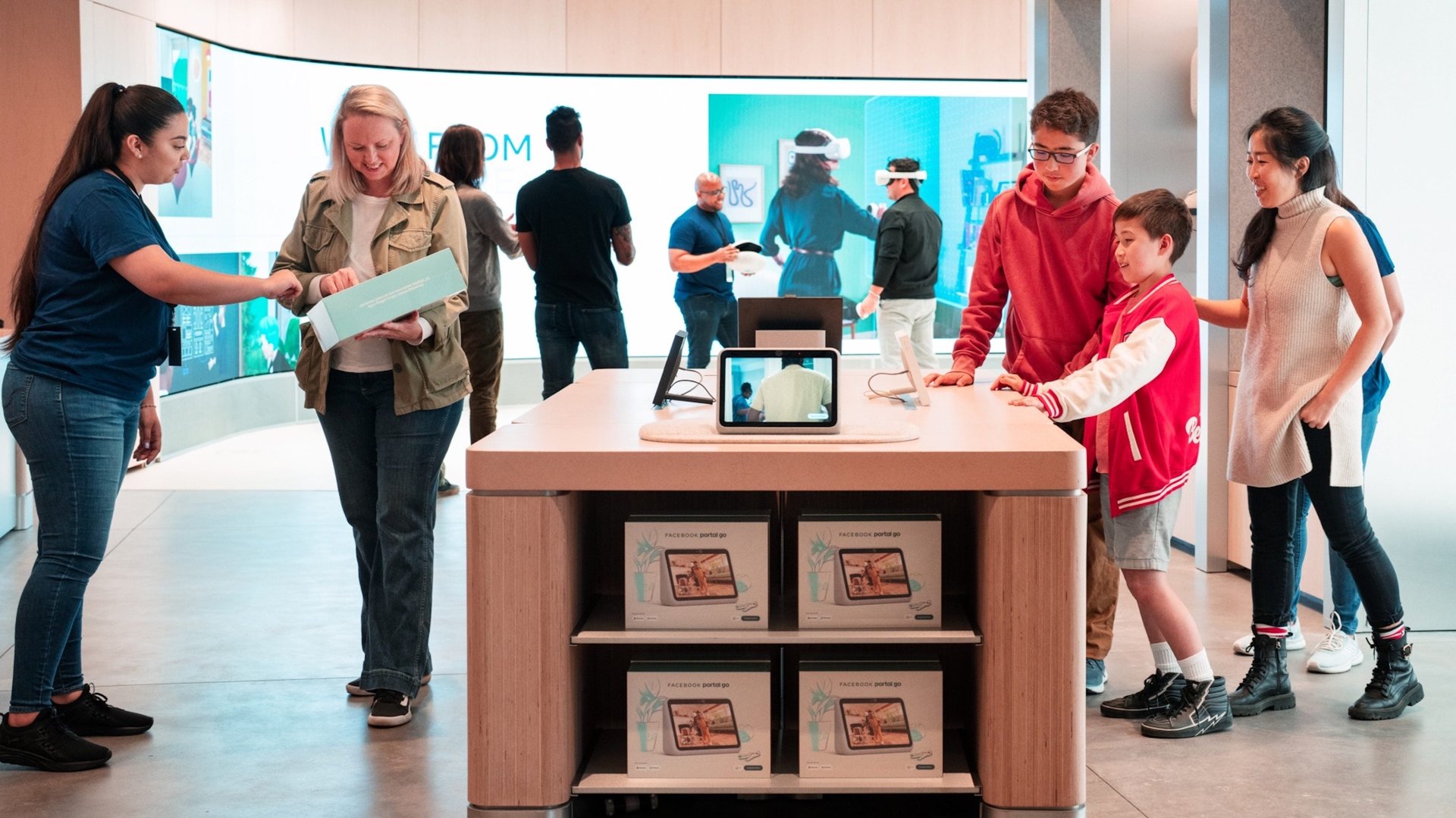Why Meta’s first hardware showroom looks like a fancy T-Mobile store
Meta has released images of its first retail store for its line of metaverse products, including the Quest 2, Ray-Ban Stories smart glasses, and the Portal video chat device. The store will be in Burlingame, California, just 30 minutes from Meta’s Menlo Park headquarters, and will allow consumers to sample and purchase the company’s hardware.


Meta has released images of its first retail store for its line of metaverse products, including the Quest 2, Ray-Ban Stories smart glasses, and the Portal video chat device. The store will be in Burlingame, California, just 30 minutes from Meta’s Menlo Park headquarters, and will allow consumers to sample and purchase the company’s hardware.
The traditionally software-focused company’s move to erect a brick-and-mortar location is another signal that it is serious about its hardware business, even as it explores the virtual reality (VR) and remote aspects of the internet.

“We’re not selling the metaverse in our store, but hopefully people will come in and walk out knowing a little bit more about how our products will help connect them to it,” said Martin Gilliard, head of the Meta Store, in a statement on the company’s website.
The store’s imagery, which shows what could be a mobile phone shop in a mall, offers none of the colorful aspects of VR or high-end feel of Ray-Ban’s outlets. Rather than indicating a lack of imagination, the approach is likely strategic.
Why Meta needs a physical space to sell its virtual vision
One of the most challenging parts of the VR industry’s mission has been to convince new users that immersive gaming and interaction is worth strapping on a headset. It’s difficult to do that through video trailers, and shoddy demo kiosks at Best Buy, Facebook’s early partner for its Oculus Quest launch.
General consumer awareness for Meta’s Portal device appears to be low compared to the Quest 2, and Ray-Ban only has 83 official stores where users can sample the smart glasses. So while a motivated consumer can visit online sites selling these products, compared to a brand like Apple, which has more than 500 stores globally, Meta is struggling to carve out consumer mind share.

That attempt to scale is also what is likely behind the relatively bland decor and design of the Meta Store. Retail stores outfitted with elaborate VR trimmings and bold layouts might attract adventurous early adopters. But to reach Mark Zuckerberg’s goal of 1 billion people in VR, and billions more using Portal and wearing Ray-Ban Stories, the product gateway will have to be as mainstream-friendly as possible, attracting all demographics.
Apple Stores may look stylish, but in practice, their spartan confines are as vanilla as a T-Mobile store, with a little more attention paid to the design elements. This is the minimalist path Google, with its experimental store in New York, Amazon and its pilot retail outlets, and now Meta are attempting to replicate. Simple and barebones in service of scale.
Hints that Meta was planning a shift into retail stores first surfaced back in November, but now that it’s a reality, the next question is: Will a new name and physical location change the public’s relationship to the brand? Meta will know soon. If the new store, set to open on May 9, manages to attract foot traffic, the Bay Area outlet could be the first of many.